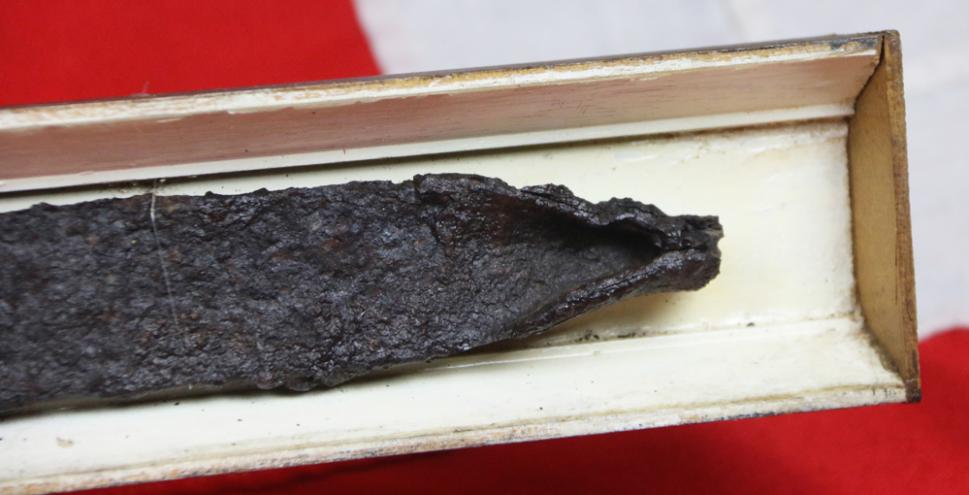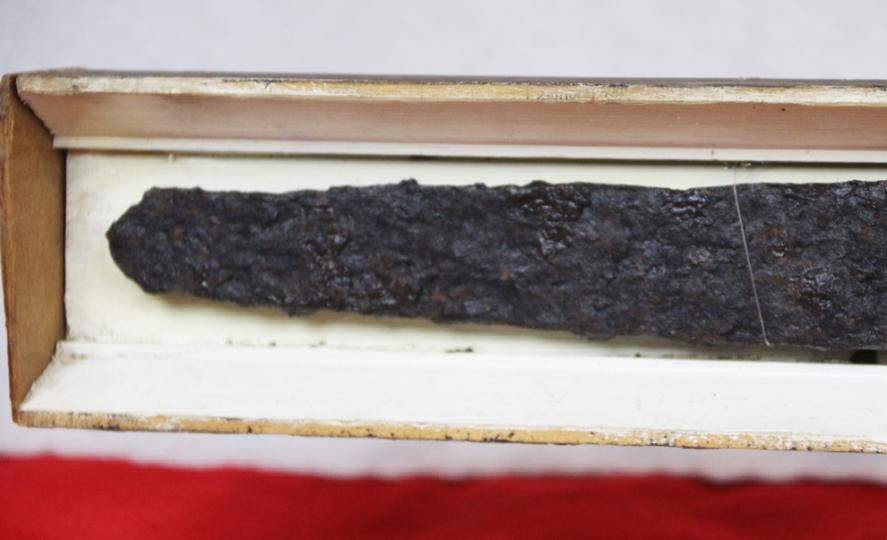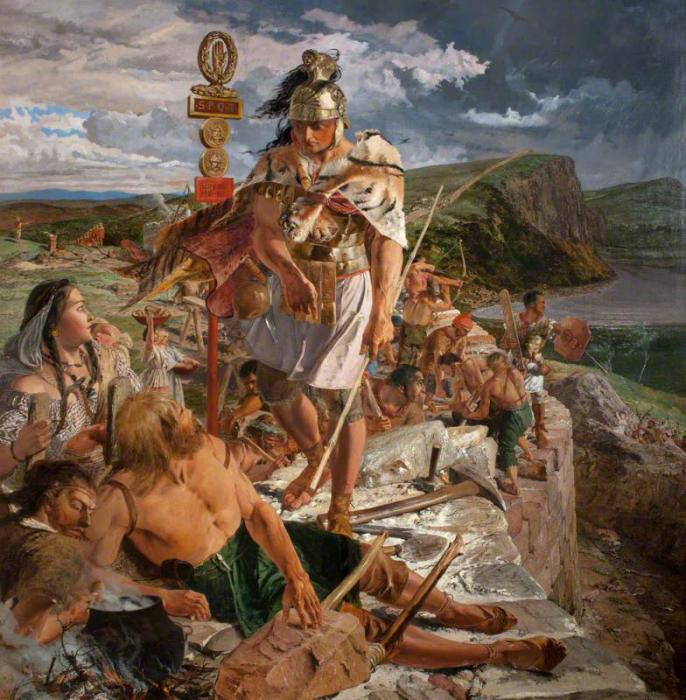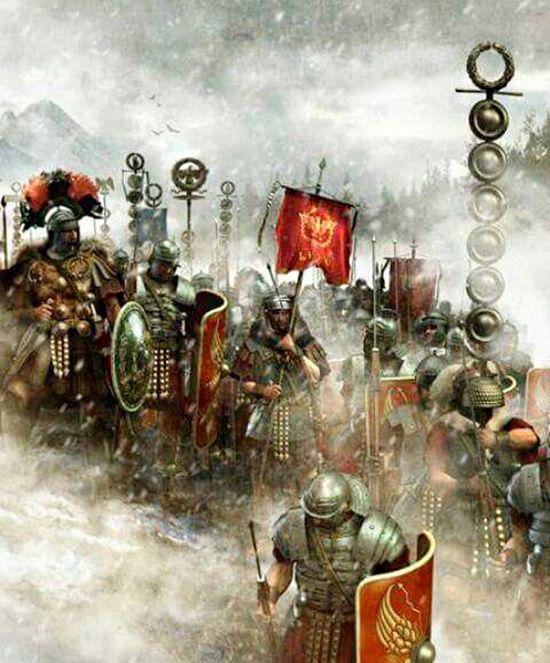Incredibly Rare British Celtic Iron Age Sword Circa Ist Cent. BC. Made Around a Century Before the Roman Conquest, by Claudius. Amazingly Its Very Type Was Noted in Caeser's Writings During His Time In Britannia. A Durotriges Celts Sword. Discovered 1857
According to the British Museum, who have an extremely similar example, there are only a few hundred remaining in existence today in the world. All of those that have been discovered, have been uncovered from famous hordes or individual finds, usually in South Central England within the past 200 years or so. This sword would have been used around what is being referred to as 'Duropolis', after the Ancient Briton, Celt, Durotriges tribe, which existed in the Wessex region. In its prime, it is thought to have contained 'hundreds' of inhabitants and would have been a major trading centre for southern Britain. The previously unknown habitation in Winterborne Kingston, near Blandford, dates from around 100BC, which makes it 80 years earlier than Colchester in Essex. Colchester was previously widely regarded as Britain's oldest recorded town.
Another fabulous hoard of around 800 Celtic iron age artefacts were announced just a few days ago in March 2025, from the Brigantes Celts of the 1st century B.C.
The most famous of the Ancient Briton Celtic tribes were the Iceni {whose name might have come from Iken, the original name of the River Ouse, where the tribe are said to have come from} who had settlements across Norfolk, in North Suffolk and East Cambridgeshire. One of them was at Brettenham on the Peddars Way, east of Thetford, which was built by Romans to quickly transport troops up to The Wash and Brancaster, where they had a fort protecting North Norfolk.
Queen Boudicca of the Iceni, probably the most famous of all the ancient Celts waged war against the Romans in Britain from 60 AD after the Romans decided to rule the Iceni directly and confiscated the Norfolk property of the leading tribesmen. The uprising was motivated by the Romans' failure to honour an agreement they had made with Boudica's husband, Prasutagus, regarding the succession of his kingdom upon his death, and by the brutal mistreatment of Boudica and her daughters by the occupying Romans.
this amazing sword is formerly from the ex-museum collection with their labelling on its display mounting board, this Ancient Briton sword was also used as a currency bar and is from the Dorset Hoard, an Iron Age hill Fort, in Dorset, excavated in 1857. It is acknowledged that this incredible and significant piece is one of the earliest examples of ancient British currency, utilizing sword blades, it is thought currency bars in the form of swords are actually the very first form of currency used in the British Isles around 2000 to 2,100 years ago, and used to barter and trade all manner of goods, and highly prized as of exceptional value at the time. It is a form of currency that is actually mentioned in Julius Caeser's writings, following Julius Caesar's expeditions to the island of Britannia in 55 and 54 BC. An Iron Age Celtic Dorset Hoard Sword, 2nd-1st century BC. It is further believed by some that they were money in the form of a sword as they were indeed once a functional sword, that was retired from combat.
A substantial long blade with the original short folded-over handle to one end; displayed in an old custom-made box housing with a recently added base and bearing old typescript 'CELTIC IRON 2nd-1st Cent B C / See Caesar's 'De Bello Gallico' V, 12 / Circulated s. and w. Britain / Dorset Hoard' label in four lines with inked correction to Spetisbury. including case (30 inches). Fair condition, held in an old museum display case with identification label.
Provenance
Ex Dorset, UK, hoard, found 1857; accompanied by a copy of the Archaeological Journal 96, pp.114-131, which includes details for the find.
Literature for reference.
See Gresham, Colin A., Archaeological Journal 96, pp.114-131, which includes details for this and other finds from the site; see also Smith, Reginald, Currency Bars, Proceedings of the Society of Antiquaries, London, 2nd Series, XX, p.182 for comparison between the examples; cf. British Museum, accession no.1862,0627.18 for an example from the site (acquired from J. Y. Akerman in 1862; other items were acquired in 1892 from the Durdan, Blandford collection). The name Brittannia was predominantly used to refer simply to the island of Great Britain. After the Roman conquest under the Emperor Claudius in AD 43, it came to be used to refer to the Roman province of Britain (later two provinces), which at one stage consist of part of the island of Great Britain south of Hadrian's wall. Almost every weapon that has survived today from this era is now in a fully russetted condition, as is this one, even the very few swords of kings, that have been preserved in national or Royal collections are today still in a relatively fair condition, but they are from a much later period.
As with all our items it comes complete with our certificate of authenticity
Code: 23228
2495.00 GBP





